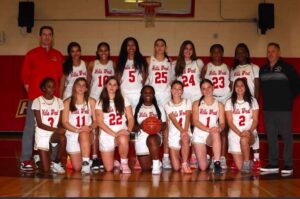What is the New York State Tax Cap?
Economic turmoil has not only brought devastation to the wallets of many Americans, but it has also corrupted the foundation that this country was built upon: education. In order to provide the finest education for the country’s future generations, New York State has recently passed a Tax Levy Cap in June of 2011; however, its purpose has been associated with common misconceptions by many members of the community. To alleviate our community from the confusion of the “2 percent tax cap”, Half Hollow Hills’ assistant administrator of finance and facilities, Anne Caliendo, discussed what the tax levy really is and its impacts on the Half Hollow Hills school district.
A tax levy is the final amount of property taxes that a school district must gather in order to stabilize their budget with regard for other revenues or incomes, including state aid. Tax levies are also responsible for influencing the tax rate in cities and towns. In school districts, a tax levy limit is the maximum tax levy that is permitted as a portion of their annual budget; the tax levy limit only requires at least 50 percent of the voters’ approval in order to be passed and at least 60 percent if the tax levy is above the limit. In the recently passed tax cap, a higher threshold or minimum of the voters’ approval is mandatory if the tax levy is to increase beyond its tax levy limit.
Several misconceptions are construed from this law. First, the idea that one’s taxes will only increase 2 percent is incorrect because the cap simply presents a voter threshold for the tax levy of the school district, not directly affecting the tax bills of community residents. Secondly, there is confusion in the difference between the “tax levy limit” and the “maximum allowable tax levy”, which residents are responsible on voting for. Finally, the last misconception is that a public vote held by a district’s board of education is obligatory for determining whether residents wish to vote on the simple majority (at least 50 percent) or the supermajority (at least 60 percent). The decision is based on if the budget lies at or above the tax cap threshold.
For the new tax law, the cap allows for approximately a 2.0% tax levy increase from the previous year. However, when this law is accounted into schools districts with a large prosperity difference, it is shown that the “less prosperous” school district will experience an increase in their budget increase about two times as large as the “more prosperous” school district due to its heavier reliance on state aid. This implies that many of the “more prosperous” school districts could prompt a loss of several education programs for their students.
It is necessary for voters and taxpaying residents to be aware of this new tax cap and the misconceptions that should be avoided before they vote. “It is evident that is school is on a tight budget”, says High School West sophomore, Umer Chaudry, so it is essential that the community as a whole makes the appropriate economic decisions to benefit the Half Hollow Hills school district. As Anne Caliendo had said, “An informed resident will be every district’s best ally”.





